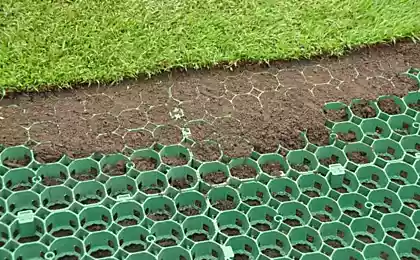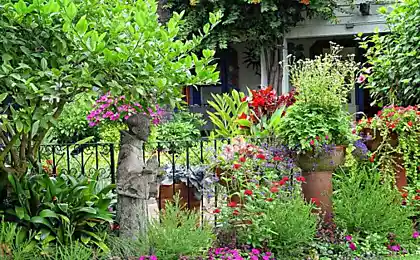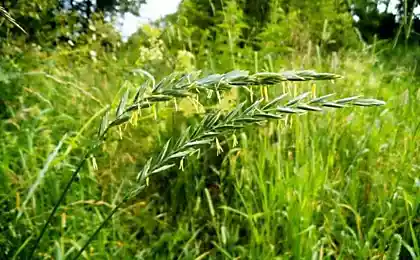152
What to sow at home instead of the usual lawn grass
Many believe that lawn-planting It doesn't require much knowledge.
Now almost every suburban area is framed by a neat lawn. Many of them are sown not personally by the owners of the site, but by specially hired workers.

And just these experts know that to create a tidy courtyard with a lawn is not a trifling matter. Therefore, before you take up the case yourself, you should still know some of the nuances of this process.

Just about these nuances editorial "Site" He'll tell you today.
Properly sow the lawn on the garden plot - this means first of all to determine the most suitable type of plants for a particular segment of the site.

For example, growing ordinary lawn grass in the shade is almost impossible. It will be overgrown with weeds and moss, which certainly will not be able to become the main decoration of the landscape.

The best alternative to grass for planting lawn in shady territory will be ground cover plants that grow completely.

With loose soil, plants such as small pervinok or bubbler are suitable.

Otherwise, a good option for planting will be thiarella, pachyzandra, ayuga, as well as ungulates.
Such cultures will not only become an excellent background for the flower garden and give the garden originality, but also protect the soil from destruction and compaction. In addition, among the many decorative plantations, the presented species are the most frost-resistant.

It should be noted that when choosing plants, it is important to take into account not only its decorative qualities, but also what climate is most favorable for them.
In the area where summer is most often dry, it is best to take root the previously mentioned small periwinkle, as well as a tuberous bubbler. Feels calm in such a region and large-flowered hornet.

If the plot is located where the earth is characterized by a special density and retains humidity for a long time, then it is worth choosing between a smelly hawk, ayuga creeping and beech telepteris. As an option, you can also consider ungulates tailed and shivering nettle.
After planting, do not forget about the care of plants. Although they are quite unpretentious, but still need periodic feeding and weeding.
Now almost every suburban area is framed by a neat lawn. Many of them are sown not personally by the owners of the site, but by specially hired workers.

And just these experts know that to create a tidy courtyard with a lawn is not a trifling matter. Therefore, before you take up the case yourself, you should still know some of the nuances of this process.

Just about these nuances editorial "Site" He'll tell you today.
Properly sow the lawn on the garden plot - this means first of all to determine the most suitable type of plants for a particular segment of the site.

For example, growing ordinary lawn grass in the shade is almost impossible. It will be overgrown with weeds and moss, which certainly will not be able to become the main decoration of the landscape.

The best alternative to grass for planting lawn in shady territory will be ground cover plants that grow completely.

With loose soil, plants such as small pervinok or bubbler are suitable.

Otherwise, a good option for planting will be thiarella, pachyzandra, ayuga, as well as ungulates.
Such cultures will not only become an excellent background for the flower garden and give the garden originality, but also protect the soil from destruction and compaction. In addition, among the many decorative plantations, the presented species are the most frost-resistant.

It should be noted that when choosing plants, it is important to take into account not only its decorative qualities, but also what climate is most favorable for them.
In the area where summer is most often dry, it is best to take root the previously mentioned small periwinkle, as well as a tuberous bubbler. Feels calm in such a region and large-flowered hornet.

If the plot is located where the earth is characterized by a special density and retains humidity for a long time, then it is worth choosing between a smelly hawk, ayuga creeping and beech telepteris. As an option, you can also consider ungulates tailed and shivering nettle.
After planting, do not forget about the care of plants. Although they are quite unpretentious, but still need periodic feeding and weeding.
Recipe for lazy dumplings with microwaved manka
Instructions for cooking cottage cheese casserole with young cabbage
























